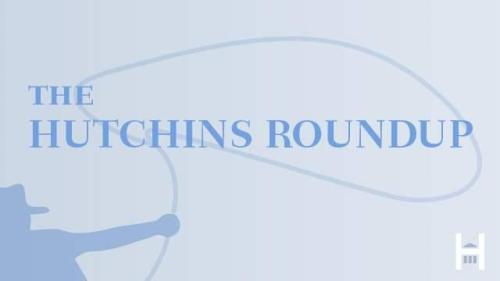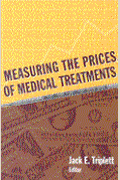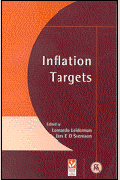Studies in this week’s Hutchins Roundup find that exposure to air pollution increases the probability of developing dementia, quantitative and qualitative forecasts are equally effective forward guidance strategies, and more.
Want to receive the Hutchins Roundup as an email? Sign up here to get it in your inbox every Thursday.
Exposure to air pollution increases the probability of developing dementia
Kelly Bishop, Jonathan Ketcham, and Nicolai Kuminoff of Arizona State University combine 15 years of Medicare records with the Environmental Protection Agency’s air quality monitors to determine whether exposure to air pollution increases the prevalence of dementia. They find that a 1 microgram per cubic meter increase in average exposure to fine particulate matter over a decade increases the probability of being diagnosed with dementia by 1.3 percentage points. This is equivalent to the elevated risk of dementia associated with a female aging from 74 to 77 or around one-third of the elevated risk associated with having diabetes. The results suggest that the EPA’s 1997 standard on the maximum allowable concentration of particulate matter saved 140,000 people from living with dementia, yielding $163 billion in benefits under moderate assumptions about the value of the quantity and quality of life. The authors show that the effect of particulate matter on dementia persists even at levels below the EPA’s current regulatory threshold, suggesting that further regulation would yield additional benefits.
Quantitative and qualitative forecasts are equally effective forward guidance strategies
The Reserve Bank of New Zealand publishes a written statement about the outlook for the economy and interest rates alongside each of its policy announcements, but only publishes a quantitative interest rate forecast every second meeting. Gunda-Alexandra Detmers of the University of Hamburg, Özer Karagedikli of the Reserve Bank of New Zealand, and Richhild Moessner of the Bank for International Settlements use this variation to compare financial market responses to different forward guidance strategies. They show that markets draw similar information from both kinds of communication, and that the marginal benefit of publishing explicit rate forecasts on top of qualitative outlooks is small. While some have speculated markets will misconstrue published interest rate paths to be promises, their findings suggest instead that markets perceive them to be conditional forecasts, consistent with central bankers’ intentions.
Reduced responsiveness of household inflation expectations to macroeconomic conditions explains the flattening Phillips curve
The Phillips curve, the statistical relationship between inflation and unemployment, has been much flatter in the past 20 years than previously. Damjan Pfajfar and John Roberts of the Federal Reserve Board use survey measures of inflation expectations to explore two potential explanations for this phenomenon: that firms adjust prices less frequently when inflation is low, or that firm and household inflation expectations are less responsive to macroeconomic conditions than in the past. While some research suggests that firms change prices less frequently now than in the 1970s and early 1980s, when inflation was high, the authors find that this cannot fully account for the large reduction in the slope of the Phillips curve. However, they do find that household inflation expectations, measured by a University of Michigan survey, have become less responsive to economic conditions, and this reduced sensitivity can account for a significant portion of the change in the relationship between inflation and unemployment in recent decades.
Chart of the week: U.S. home prices continue to appreciate, but at a slower pace than four years ago

Quote of the week:
“Despite these short-term pressures, in the medium term I don’t see inflation running away from us. I think you could see it in the short run get to more elevated levels. But …the counterforces, the structural forces, many of them are in fact creating a headwind for inflation. And they’re the same ones: aging population, aggressive investment in technology, technology-enabled disruption, …a historic amount of computing power in the hands of consumers that’s limiting pricing power, and globalization and automation generally are putting downward pressure on inflation,” says Robert Kaplan, president of the Federal Reserve Bank of Dallas.
“[T]his is why I say gradually remove accommodation, gradually raise rates, let’s get to neutral and then let’s assess where we go, …because I’m conscious of the fact we’ve got a lot of fiscal stimulus, we got a very strong economy in 2018, but that GDP growth we believe—and I hope I’m wrong on this by the way—is likely …to wane and trend back down to 2%—around 2% in ’20 and ’21. And you may see these big structural forces more come to the fore. So I think we’re just going to have to be gradual and patient and try to see our way through this.”











Commentary
Hutchins Roundup: Air pollution and dementia, qualitative and quantitative forward guidance, and more
September 6, 2018